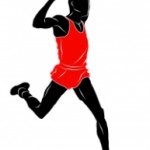 Running and jogging are popular activities that help people to stay in shape and improve their cardiovascular health. But, as with any other physical activity there are injuries that can sideline the athlete for days if not weeks. Sometimes these injuries can even sideline a runner for months.
Running and jogging are popular activities that help people to stay in shape and improve their cardiovascular health. But, as with any other physical activity there are injuries that can sideline the athlete for days if not weeks. Sometimes these injuries can even sideline a runner for months.
One of the injuries that can plague runners and joggers are hamstring strains and pulls. Oftentimes people ask when they can begin running after a hamstrain injury but the correct term is a hamstring injury. However, the injury is a ‘strain’ so it’s quite understandable how this can be confusing.
The hamstring muscles are located in the back of the thigh. There are three different muscles that comprise the group of muscles called the hamstring muscles. This group of muscles so called because if they are cut the person is essentially ‘hamstrung’ or unable to walk.
The three muscles are the biceps femoris, semitendonous and semimembranosus and are attached at the bony prominence in the buttocks and the back of the knee. They are responsible for the power behind each running or walking stride. Many sprinters have well developed hamstrings and quadriceps (muscles on the front of the thighs) to provide explosive power out of the blocks.
 A hamstring injury happens when the runner isn’t well warmed up, stretches too vigorously or as a result of chronic stress. As a result the runner will have pain when the knee bends and the thigh moves backwards relative to the trunk of the body.
A hamstring injury happens when the runner isn’t well warmed up, stretches too vigorously or as a result of chronic stress. As a result the runner will have pain when the knee bends and the thigh moves backwards relative to the trunk of the body.
Running after a hamstring injury will depend upon the severity of the injury. These strains are rated as first, second or third degree injuries. A first degree injury will result in some minor tears to the muscle that will heal well with rest and ice.
A second degree strain to the hamstring muscle experiences moderate tears with pain that generally covers a larger area of the muscle than a first degree tear. The muscle will be stiff and weak and may be black and blue. A third degree tear will result in wide-spread bruising and a balling up of the muscle may be felt or palpated with the hand. Third degree strains are less common than first or second degree.
Athletes who suffer from a hamstring injury will follow a rehabilitation program that includes rest, ice, compression, elevation, mild stretching and strengthening exercises. Running after a hamstring injury is successful after the runner waits until the injury has healed completely.
Second and third degree tears can happen easily when first degree tears don’t heal completely and the runner returns to activity too early. This increased activity will only sideline the athlete for longer periods of time than originally anticipated.
Athletes may be disappointed by a hamstring injury because of the time away from the road or track that they must pay in order to run again, but they will be rewarded with stronger legs and faster running when they follow a strong rehabilitation program that heals, strengthens and stretches the muscles.
Resources:
Runners World: The Trick to Hamstring Rehab
http://www.runnersworld.com/injury-treatment/trick-hamstring-rehab
New York Daily News: Running Docs Advice on the Best Way to Avoid or Rehab Hamstring Injuries
http://www.nydailynews.com/sports/more-sports/running-doc-avoid-hamstring-injuries-article-1.1327216
Runners World: BodyWorks: Hamstring Injuries
http://www.runnersworld.co.uk/beating-injury/bodyworks-hamstring-injuries/212.html
TeensHealth: Hamstring Strain
http://kidshealth.org/teen/diseases_conditions/bones/hamstring_strain.html
Jeff Galloway: Injury Archive: Hamstring Pain
http://www.jeffgalloway.com/training/injury_archives/hamstring.html
Runners Connect: High Hamstring Tendinopathy Injuries
http://runnersconnect.net/running-injury-prevention/high-hamstring-tendinopathy-injuries-a-pain-in-the-butt/


Leave a Reply